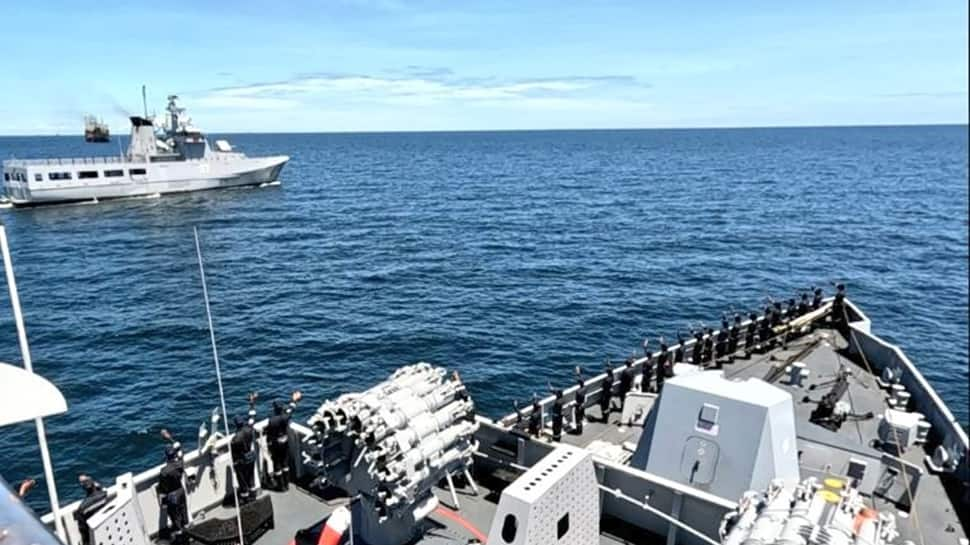Indo-Pak Border Flare-Up: Amid fresh outrage over the Pahalgam massacre that killed 26 Indian tourists, India stands at a decisive crossroads: respond with overwhelming force or strike with smart, multi-domain precision. While a full-scale war with Pakistan may seem unlikely due to nuclear risks, India has a wide range of conventional and unconventional warfare options—each carrying different levels of impact, escalation, and risk. Here’s a clear-eyed look at how India could make Pakistan pay—without triggering a catastrophic conflict.
1. Conventional Full-Scale War: Risky but Dominant
India’s military advantage—1.4 million troops vs. Pakistan’s 617,000—offers clear superiority on paper. If war broke out along multiple fronts (Punjab, Rajasthan, LoC), India could aim to capture strategic territories or paralyze Pakistan’s military structure.
However, Pakistan’s first-use nuclear doctrine makes such a move incredibly risky. Any large-scale territorial advance could provoke nuclear retaliation.
Verdict: Technically feasible, but practically ruled out due to the nuclear red line.
2. Limited Conventional Conflict: Precision with Restraint
Localized clashes along the LoC or border areas, like India’s past “surgical strikes” or Kargil-style operations, offer tactical payback. These actions are meant to inflict pain without pushing for escalation.
India’s 2019 Balakot airstrikes post-Pulwama terror attack are a template: direct hits on terror infrastructure with minimal footprint.
Verdict: Most practical and proven option—but still carries escalation risk if mismanaged.
3. Surgical Airstrikes & Missile Hits
Using fighter jets or cruise missiles (like BrahMos) to take out terror camps, military depots, or ISI assets inside Pakistan is an option with symbolic and strategic punch. Risk of pilots being captured (like in 2019) or collateral damage is high, but missile-only options reduce exposure.
Verdict: Feasible, and India has done it before. Must avoid civilian casualties to retain international support.
4. Covert Operations & Proxy Pressure
India’s RAW could ramp up intelligence-driven operations to target terror financiers or support dissident movements like Baloch separatists. Hard to prove, but high on impact and deniability. Could pressure Pakistan without public war declaration.
Verdict: Ongoing in shadows. Sustainable, but risks tit-for-tat escalation.
5. Naval Pressure in the Arabian Sea
A blockade of Karachi or destruction of key Pakistani naval assets would cripple their economy. India’s INS Vikrant, Scorpène-class submarines, and naval aviation could dominate sea battles.
Verdict: High-risk, high-reward. Could impact global trade and provoke massive escalation.
6. Economic Warfare: Choking the Lifelines
India’s 2025 suspension of the Indus Waters Treaty sent a bold signal. Trade bans, cutting off airspace, and lobbying for global sanctions can further squeeze Pakistan. With a $3.4 trillion economy, India holds massive leverage compared to Pakistan’s shrinking economy.
Verdict: Very effective—and already in play. Escalation is minimal, but long-term retaliation possible.
7. Cyber Warfare: Hit Without a Trace
India can target Pakistan’s power grids, telecom systems, or financial networks using NTRO and allied agencies. Cyberwar is deniable and effective but could invite counterstrikes.
Verdict: Low-cost, high stealth—perfect for asymmetric response.
8. Diplomatic Isolation: Weaponizing Global Influence
India is already using its strong global partnerships to brand Pakistan a terror sponsor and rally support. 2025 saw visa suspensions, trade restrictions, and pressure campaigns on platforms like the UN and G20.
Verdict: Long-term game—but highly feasible and sustainable.
Final Take: No Boots Needed to Break Pakistan
India doesn’t need to march into Islamabad to deliver a blow. Through calibrated force, economic pressure, covert operations, and global diplomacy, New Delhi can degrade Pakistan’s terror machinery without triggering nuclear war.
This is not about avoiding conflict—it’s about winning smartly.
From the skies of Balakot to the rivers of Indus, India has options.
The message is clear: act, retaliate—but don’t stumble into all-out war.
(Girish Linganna is a Defence and Geopolitical Analyst based out of Bengaluru. He is also the Director of ADD Engineering Components, India, Pvt. Ltd, a subsidiary of ADD Engineering GmbH, Germany. The views expressed in this article are of the author only.)
#Warplay #Warfare #India #Break #Pakistan #Crossing #Nuclear #Line
Indo-Pak Tension, Pakistan, India, Pahalgam, terror attack, ,Indo-Pak tension, Pakistan, India
latest news today, news today, breaking news, latest news today, english news, internet news, top news, oxbig, oxbig news, oxbig news network, oxbig news today, news by oxbig, oxbig media, oxbig network, oxbig news media
HINDI NEWS
News Source



